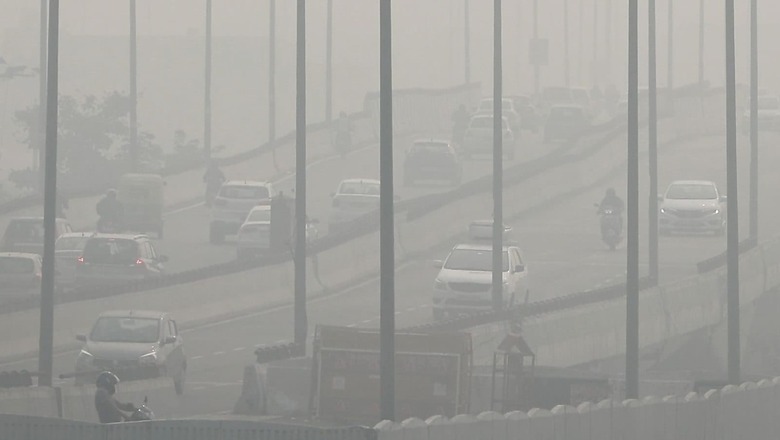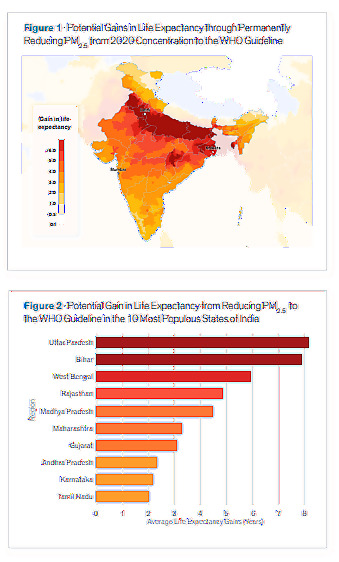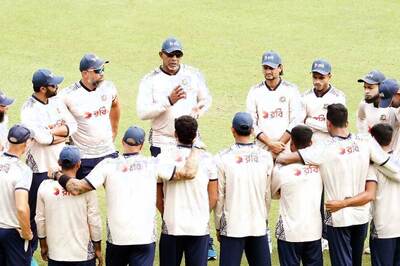
views
The deadly impact of air pollution is most prominent in South Asia, especially India, where residents are expected to lose about five years of their lives on an average, if the current high levels of pollution persist. The alarming, yet significant, assertions have emerged from the latest edition of the Air Quality Life Index (AQLI) released by Energy Policy Institute of India (EPIC) University of Chicago, South Asia, on Tuesday.
According to the analysis, based on new and revised satellite-derived PM2.5 data of all countries in the world, India faces the highest health burden of air pollution due to its high particulate pollution concentrations and large population.
“It would be a global emergency if Martians came to Earth and sprayed a substance that caused the average person on the planet to lose more than two years of life expectancy. This is similar to the situation that prevails in many parts of the world, except we are spraying the substance, not some invaders from outer space,” said Milton Friedman, Distinguished Service Professor in Economics Michael Greenstone, who developed the AQLI along with his team at the EPIC-India.
The index quantifies the long-term effect of air pollution on human life, and takes into account hyper-localised, global particulate measurements.
BREACHING WHO GUIDELINE
During the first year of the Covid-19 pandemic, the world’s economy slowed. Yet, the global annual average particulate pollution (PM2.5) was largely unchanged from 2019 levels. At the same time, growing evidence shows air pollution—even when experienced at very low levels—hurts human health.
This recently led the World Health Organization (WHO) to revise its guideline (from 10 µg/m³ to 5 µg/m³) for what it considers a safe level of exposure to particulate pollution, bringing most of the world—97.3% of the global population—into the unsafe zone.
Experts highlight that the WHO’s decision to revise its guideline by such a significant amount is a powerful signal that air pollution is more deadly than initially thought.
Due to South Asia’s high population and pollution concentrations, the region accounts for 52% of total life years lost globally due to particulate pollution exceeding the WHO guideline. India, especially has been a high contributor and since 2013, about 44% of the world’s increase in pollution has come from the country, it says.
HOW INDIA FARES
According to the analysis, all of India’s 1.3 billion people live in areas where the annual average particulate pollution level exceeds the WHO guideline. More than 63% of the population lives in areas that exceed the country’s own national air quality standard of 40 µg/m3.

Some areas of India fare much worse than average, with air pollution shortening lives by almost 10 years in the National Capital Territory of Delhi, the most polluted city in the world with average annual PM2.5 levels exceeding 107 µg/m3 , or more than 21 times the WHO guideline.
The impact is profound in the overall Indo-Gangetic plains, which houses nearly 40% of India’s population, and people are on track to lose 7.6 years of life expectancy on average if current pollution levels persist.
Since 1998, India’s average annual particulate pollution has increased by 61.4%, and currently, it stands as the world’s second most polluted country.
NCAP: THE SOLUTION
However, the analysis provides the way out.
In 2019, government launched its National Clean Air Programme (NCAP) with a goal to reduce particulate pollution by 20 to 30%, relative to 2017 levels, by 2024. The NCAP targets are non-binding. However, experts say, if India were to achieve and sustain this reduction, it would lead to remarkable health improvements. According to the AQLI, a permanent, nationwide reduction of 25%, the midpoint of NCAP’s target range, would increase India’s average national life expectancy by 1.4 years, and by 2.6 years for residents of the National Capital Territory of Delhi.
Not just Delhi, the pollution has expanded geographically over the past two decades. The data shows that in the Indian states of Maharashtra and Madhya Pradesh, pollution has risen by 68.4 and 77.2%, respectively, since 2000. Here, the average person is now losing an additional 1.5 to 2.2 years of life expectancy, relative to the life expectancy implications of pollution levels in 2000, it says.
“By updating the AQLI with the new WHO guideline based on the latest science, we have a better grasp on the true cost we are paying to breathe polluted air,” said AQLI Director Christa Hasenkopf. “Now that our understanding of pollution’s impact on human health has improved, there is a stronger case for governments to prioritise it as an urgent policy issue.”
Meanwhile, globally, the index finds that the particulate air pollution takes 2.2 years off global average life expectancy, or a combined 17 billion life years, relative to a world that met the WHO guideline (5 µg/m3).
Read all the Latest News , Breaking News , watch Top Videos and Live TV here.















Comments
0 comment